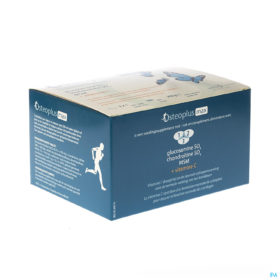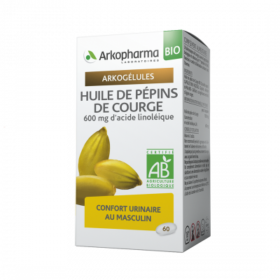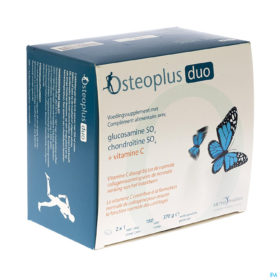Description
Omega 3 zijn poly-onverzadigde vetzuren van plantaardige of dierlijke afkomst waarvan een toediening via de westerse voeding ontoereikend is. Daar ze aanwezig zijn in alle celmembranen, verklaart hun alomtegenwoordigheid in het organisme waarom ze een effect hebben op alle biologische lichaamfuncties. Inuïtes, waarvan gekend is dat ze veel vis eten die rijk is aan omega 3, vertonen niet alleen weinig cardiovasculaire aandoeningen, maar ook weinig huidziekten. Samenvattend, kan men zeggen dat dit te wijten is aan de omega 3-eigenschappen die ontstekingswerende biochemische en fysische effecten hebben op de membraanfluïditeit. Huid Omega 3 maken de huid soepeler en elastischer door dezelfde mechanismen als die waardoor vissen in de diepzee soepel kunnen blijven ondanks het ijskoude water. Zonder deze vetzuren zouden het lichaam en de huid van de vissen heel stram zijn. Daarom zullen huidproblemen zoals een droge huid, eczeem en psoriasis opgelost worden na de inname van omega 3 met name dankzij hun ontstekingswerende eigenschappen (1, 2, 3, 4). Cardiovasculair stelsel Omega 3 hebben verschillende effecten: 1. Duidelijke verlaging van triglyceridengehalte (25% vermindering van de triglyceriden voor 3 g omega 3) als natuurlijke ligand van de alfa-PPARs (5) 2. Stijging van HDL (5) 3. Verbetering van de endotheelfunctie namelijk dankzij hun ontstekingswerende eigenschappen (5) 4. Antiaggregerende eigenschappen van de bloedplaatjes (5) 5. Verbetering van variaties in hartritme (5) 6. Daling van mortaliteit bij hartinsufficiëntie (5) 7. Daling van risico op ventriculaire fibrillatie tijdens reperfusie na hartinfarct (5) 8. Verbetering van systolische en diastolische bloeddruk (5
2 tot 3 capsules per dag of zoals aanbevolen. Tijdens de maaltijden.
Gluten-vrij Geschikt bij zwangerschap Geschikt bij borstvoeding Lactose-vrij
2 tot 3 capsules per dag of zoals aanbevolen. Tijdens de maaltijden.
-
Alm B, Aberg N, Erdes L, Möllborg P, Pettersson R, Norvenius SG, Goksör E, Wennergren G. Early introduction of fish decreases the risk of eczema in
infants. Arch Dis Child. 2009 Jan;94(1):11-5. -
Koch C, Dölle S, Metzger M, Rasche C, Jungclas H, Rühl R, Renz H, Worm M.
Docosahexaenoic acid (DHA) supplementation in atopic eczema: a randomized,
double-blind, controlled trial. Br J Dermatol. 2008 Apr;158(4):786-92. -
Zulfakar MH, Edwards M, Heard CM. Is there a role for topically delivered
eicosapentaenoic acid in the treatment of psoriasis? Eur J Dermatol. 2007
Jul-Aug;17(4):284-91. -
Simopoulos AP. Omega-3 fatty acids in inflammation and autoimmune diseases. J
Am Coll Nutr. 2002 Dec;21(6):495-505. -
Lee JH, O’Keefe JH, Lavie CJ, Marchioli R, Harris WS. Omega-3 fatty acids for
cardioprotection [published correction appears in Mayo Clin Proc.2008;
83(6):730]. Mayo Clin Proc. 2008;83(3):324-332 -
BLOCK RC, HARRIS WS, REID KJ, SANDS SA, SPERTUS JA: EPA and DHA in blood cell
membranes from acute coronary syndrome patients and controls. Atherosclerosis
197: 821-828, 2008. -
Schuchardt JP, Huss M, Stauss-Grabo M, Hahn A. Significance of long-chain
polyunsaturated fatty acids (PUFAs) for the development and behaviour of
children. Eur J Pediatr. 2010 Feb;169(2):149-64. -
Gow RV, Matsudaira T, Taylor E, Rubia K, Crawford M, Ghebremeskel K,
Ibrahimovic A, Vallée-Tourangeau F, Williams LM, Sumich A. Total red blood
cell concentrations of omega-3 fatty acids are associated with emotion-
elicited neural activity in adolescent boys with attention-deficit
hyperactivity disorder. Prostaglandins Leukot Essent Fatty Acids. 2009 Feb-
Mar;80(2-3):151-6. -
Sumich A, Matsudaira T, Gow RV, Ibrahimovic A, Ghebremeskel K, Crawford M,
Taylor E. Resting state electroencephalographic correlates with red cell
long-chain fatty acids, memory performance and age in adolescent boys with
attention deficit hyperactivity disorder. Neuropharmacology. 2009 Dec;57(7-
8):708-14. -
Bélanger SA, Vanasse M, Spahis S, Sylvestre MP, Lippé S, L’heureux F,
Ghadirian P, Vanasse CM, Levy E. Omega-3 fatty acid treatment of children
with attention-deficit hyperactivity disorder: A randomized, double-blind,
placebo-controlled study. Paediatr Child Health. 2009 Feb;14(2):89-98. -
Nemets H, Nemets B, Apter A, Bracha Z, Belmaker RH. Omega-3 treatment of
childhood depression: a controlled, double-blind pilot study. Am J
Psychiatry. 2006 Jun;163(6):1098-100. -
McNamara RK. DHA deficiency and prefrontal cortex neuropathology in recurrent
affective disorders. J Nutr. 2010 Apr;140(4):864-8. -
Appleton KM, Rogers PJ, Ness AR. Updated systematic review and meta-analysis
of the effects of n-3 long-chain polyunsaturated fatty acids on depressed
mood. Am J Clin Nutr. 2010 Mar;91(3):757-70. -
Freeman MP. Omega-3 fatty acids in major depressive disorder J Clin
Psychiatry. 2009;70 Suppl 5:7-11 -
Borja-Hart NL, Marino J. Role of omega-3 Fatty acids for prevention or
treatment of perinatal depression. Pharmacotherapy. 2010 Feb;30(2):210-6. -
Féart C, Peuchant E, Letenneur L, Samieri C, Montagnier D, Fourrier-Reglat A,
Barberger-Gateau P. Plasma eicosapentaenoic acid is inversely associated
with severity of depressive symptomatology in the elderly: data from the
Bordeaux
sample of the Three-City Study. Am J Clin Nutr. 2008 May;87(5):1156-62. -
Serini S, Piccioni E, Calviello G. Dietary n-3 PUFA vascular targeting and
the prevention of tumor growth and age-related macular degeneration. Curr Med
Chem. 2009;16(34):4511-26. -
Sangiovanni JP, Agrón E, Meleth AD, Reed GF, Sperduto RD, Clemons TE, Chew
EY; Age-Related Eye Disease Study Research Group {omega}-3 Long-chain
polyunsaturated fatty acid intake and 12-y incidence of neovascular age-
related macular degeneration and central geographic atrophy: AREDS report 30,
a prospective cohort study from the Age-Related Eye Disease Study Am J Clin
Nutr. 2009 Dec;90(6):1601-7. -
Ruggiero C, Lattanzio F, Lauretani F, Gasperini B, Andres-Lacueva C,
Cherubini A. Omega-3 polyunsaturated fatty acids and immune-mediated
diseases: inflammatory bowel disease and rheumatoid arthritis. Curr Pharm
Des. 2009;15(36):4135-48. -
Proudman SM, Cleland LG, James MJ. Dietary omega-3 fats for treatment of
inflammatory joint disease: efficacy and utility. Rheum Dis Clin North Am.
2008 May;34(2):469-79. -
Brunborg LA, Madland TM, Lind RA, Arslan G, Berstad A, Frøyland L. Effects
of short-term oral administration of dietary marine oils in patients with
inflammatory bowel disease and joint pain: a pilot study comparing seal oil
and cod liver oil. Clin Nutr. 2008 Aug;27(4):614-22. -
Gruenwald J, Petzold E, Busch R, Petzold HP, Graubaum HJ. Effect of
glucosamine sulfate with or without omega-3 fatty acids in patients with
osteoarthritis Adv Ther. 2009 Sep;26(9):858-71. -
Furuhjelm C, Warstedt K, Larsson J, Fredriksson M, Böttcher MF, Fälth-
Magnusson K, Duchén K. Fish oil supplementation in pregnancy and lactation
may decrease the risk of infant allergy. Acta Paediatr. 2009 Sep;98(9):1461-
De omega 3-vetzuren hebben een invloed op de bloedplaatjesaggregatie enkunnen dus de bloedingstijd verlengen. Het aanvullen van een tekort aan omega
3-vetzuren is echter wel aangewezen.
| NUTRITIONELE INFORMATIE PER 3 CAPSULES | ||
| Omega-3 meervoudig onverzadigde vetzuren | 500.0 mg | |
| waarin: | ||
| EPA (eicosapentaeenzuur) | 240.0 mg | |
| DHA (docosahexaeenzuur) | 160.0 mg | |
| Vitamine E (emulsie van d-alfatocoferol) | 4.5 mg | (38% RI*) |
| Ingrediënten: Visolie van vis uit diepzeewater (triglyceridenvorm), gemengde tocoferolen Hulpstoffen: limoenolie, rozemarijnolie, sojalecithine, ascorbylpalmitaat * RI = Referentie Inname |
||













